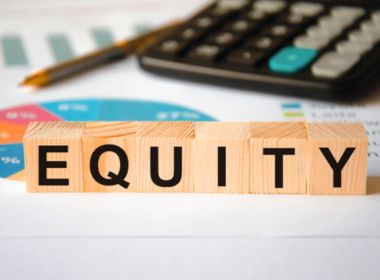Search Suggestions
- Gold Loan
- Money Transfer
- Mutual Funds

Small Cap Vs Mid Cap Vs Large Cap Mutual Funds: Key Differences & How to Choose
Investing in mutual funds is one of the most popular and convenient ways to build wealth over the long term. Mutual funds pool money from multiple investors and invest in a diversified portfolio of shares, bonds, or other securities. Among the various types of mutual funds, Large Cap, Mid Cap, and Small Cap mutual funds are frequently discussed and chosen by investors. Understanding the differences between these categories is crucial for making informed investment decisions and achieving your financial goals.
Table of Content
- What is Market Capitalisation?
- What is a Large Cap Fund?
- What is a Mid Cap Fund?
- What is a Small Cap Fund?
- How to Choose the Right Mutual Fund?
What is Market Capitalisation?
Market capitalisation, often referred to as market cap, is a measure of a company's total value as determined by the stock market. It is calculated by multiplying the company's current share price by its total number of outstanding shares. Market cap helps investors understand the size of a company, which in turn gives insights into the company’s risk and growth potential.
- Large Cap: Companies with a market cap of over ₹20,000 crore. These are the top 100 companies in terms of market size and usually have a strong track record of stable performance. They are industry leaders with wide brand recognition and large customer bases.
- Mid Cap: Companies with a market cap between ₹5,000 crore and ₹20,000 crore. These fall within the 101st to 250th rankings by market size. They are generally in a growth phase and expanding their presence in the industry.
- Small Cap: Companies with a market cap below ₹5,000 crore. These are generally ranked 251st and beyond and are considered emerging or developing businesses with high growth potential but also higher risk.
What is a Large Cap Fund?
A Large Cap Fund is a type of mutual fund that primarily invests in large-cap companies. These companies are well-established, reputed, and financially sound. They typically lead their respective industries and offer consistent performance over time.
Features:
- Stability: Large cap companies are known for their business stability and steady revenues. They often perform reliably during market ups and downs, making them a safer investment option.
- Lower Risk: These funds are considered safer than mid and small-cap funds because they invest in companies with proven track records. They are less affected by market volatility and economic downturns.
- Consistent Returns: Although the returns may not be exceptionally high, they tend to be stable and predictable, making them suitable for conservative investors who value safety and reliability.
Ideal for:
Investors who are risk-averse and looking for steady capital appreciation with relatively lower volatility. If you are investing for goals such as retirement or capital preservation, Large Cap Funds can be a good choice.
What is a Mid Cap Fund?
A Mid Cap Fund focuses on companies that are in the mid-size segment of the market. These companies are usually in their growth phase, with a strong potential to become large-cap in the future. They may not have the stability of large-cap companies but often offer better growth prospects.
Features:
- Growth Potential: Mid cap companies are usually expanding their operations and improving their market share, offering investors good growth opportunities. These companies are often more innovative and agile compared to large caps.
- Moderate Risk: While they are more volatile than large-cap funds, they are less risky compared to small-cap funds. Their performance depends on management quality, market conditions, and competitive advantages.
- Diversification: Mid-cap funds can help diversify a portfolio by bridging the gap between stability and aggressive growth. They can offer a balanced mix of risk and return.
Ideal for:
Investors who are comfortable with moderate risk and aim for higher returns over a medium to long-term horizon. These funds are suitable for those who are looking to add some growth to their portfolio without taking extreme risks.
Suggested Read: Index Funds vs. Mutual Funds: Key Differences That You Should Know
What is a Small Cap Fund?
A Small Cap Fund invests in companies that are relatively smaller in size and often in the early stages of development. These companies may have limited historical data, but they offer tremendous growth opportunities if they perform well.
Features:
- High Growth Potential: Small cap companies can deliver exponential returns as they grow, innovate, and capture market share. They are ideal for investors seeking aggressive growth.
- High Risk: These funds are the most volatile among all equity funds, as small companies are more vulnerable to market fluctuations, economic changes, and business failures.
- Liquidity Concerns: Stocks of small cap companies may not be traded frequently which leads to potential difficulties in buying or selling. This could also result in price volatility.
Ideal for:
Investors with a high-risk appetite, a long-term investment horizon, and a desire to maximise returns. These funds are suitable for experienced investors who can withstand market fluctuations and have the patience to hold investments during market downturns.
Suggested Read: Build Your First Mutual Fund Portfolio: A Beginner's Guide
How to Choose the Right Mutual Fund?
Selecting the right mutual fund depends on your financial goals, risk tolerance, and investment horizon. Here are some key points to consider:
- Assess Risk Tolerance: Understand how much market volatility you are comfortable with. If you are risk-averse, a Large Cap Fund may be the best fit. For higher returns and higher risk, consider Mid Cap or Small Cap Funds.
- Define Your Investment Goals: Are you investing for short-term stability, medium-term gains, or long-term wealth creation? Match the fund type to your goal. For long-term goals like retirement, you might prefer mid or small caps.
- Investment Duration: Small and mid-cap funds usually require a longer holding period to benefit from their growth potential. Large-cap funds can be suitable even for shorter durations. Ensure your investment horizon aligns with the fund's nature.
- Diversify: Don’t put all your money into one type of fund. Diversification helps balance returns and reduces risk. A mix of Large Cap, Mid Cap, and Small Cap Funds often works best to minimise risk and maximise returns.
- Evaluate Fund Performance: Review the past performance of the fund, expense ratios, portfolio holdings, and the fund manager’s experience. Consistent performance over time is a good indicator of fund quality.
- Professional Advice: If you're unsure, consult a certified financial adviser to help craft a personalised investment plan. An expert can help you build a portfolio suited to your unique financial needs.
Knowing the difference between small cap mid cap and large cap funds can significantly improve your investment decisions. Each category has its unique set of advantages and challenges. While Large Cap Funds offer stability and lower risk, Mid Cap Funds strike a balance between growth and volatility. On the other hand, Small Cap Funds present exciting opportunities for high returns, albeit with higher risk.
- Invest in Mutual Fund
- Systematic Investment Plan
- Mutual Fund Calculator
- Liquid Mutual Fund
- Debt Funds
- Balanced Funds
- Equity Linked Schemes
- Tax Saving Schemes
CATEGORIES
OUR SERVICES
-

Credit Score
-

Gold Loan
-

Personal Loan
-

Cibil Score
-

Vehicle Loan
-

Small Business Loan
-

Money Transfer
-

Insurance
-

Mutual Funds
-

SME Loan
-

Corporate Loan
-

NCD
-

PAN Card
-

NPS
-

Custom Offers
-

Digital & Cashless
-

Milligram Rewards
-

Bank Mapping
-

Housing Finance
-

#Big Business Loan
-

#Gold Loan Mela
-

#Kholiye Khushiyon Ki Tijori
-

#Gold Loan At Home
-

#Sunherisoch
RECENT POSTS

Understanding KDM Gold and Why it’s Banned
Know More
How BNPL Affects Your Credit Score
Know More
What is a Cheque and its Different Types in India?
Know More
Benefits of Paying Your EMIs on Time: Why Timely Payments Matter
Know More
A Complete Guide to Report Online Fraud
Know More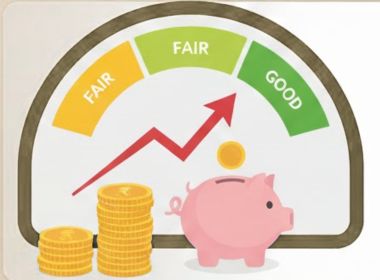
How does a Personal Loan Affect your Credit Score?
Know More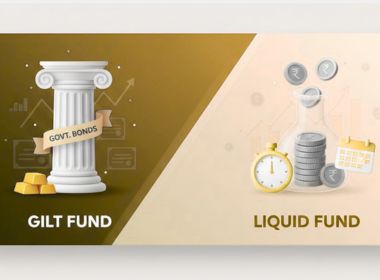
Gilt Fund vs Liquid Fund: Full Form, Meaning & SIP Guide
Know More
XIRR in Mutual Funds & SIP: Full Form, Meaning, Formula and How to Calculate
Know More
7 Key Factors to Consider Before Taking an SME Loan
Know More
Difference Between Black Gold and Gold: Everything You Need to Know
Know MoreFIN SHORTS

What Are Co-Pay and Deductibles in Insurance Policies?
Know More
Should You Take a Loan Against Your Mutual Fund or SIP?
Know More
Top 5 Best Mid-Cap Mutual Funds to Watch in 2026
Know More
Are Personal Loans Right for Retirees? Key Points to Consider
Know More
What Happens to a Personal Loan After the Borrower Dies?
Know More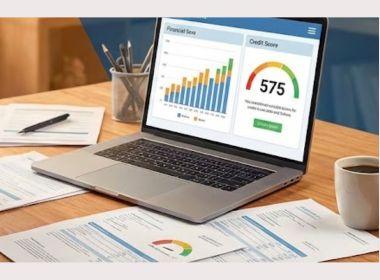
Best Loan Choices for Credit Scores of 580 and Below
Know More
7 Reasons Why a Gold Loan Is the Best Option for Small Businesses
Know More
10 Reasons Why People in India Prefer Physical Gold
Know More
Real Estate vs Gold: Which Is a Better Investment in India?
Know More
10 Common Mistakes That Make Investors Lose Money in Mutual Funds
Know More
10 Reasons Why Gold Has So Much Appeal in Uncertain Times
Know More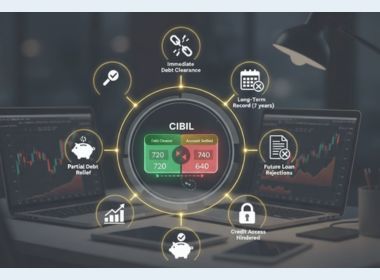
7 Ways Settling Debt Can Impact Your CIBIL Score
Know More- South +91 99469 01212
- North 1800 313 1212



